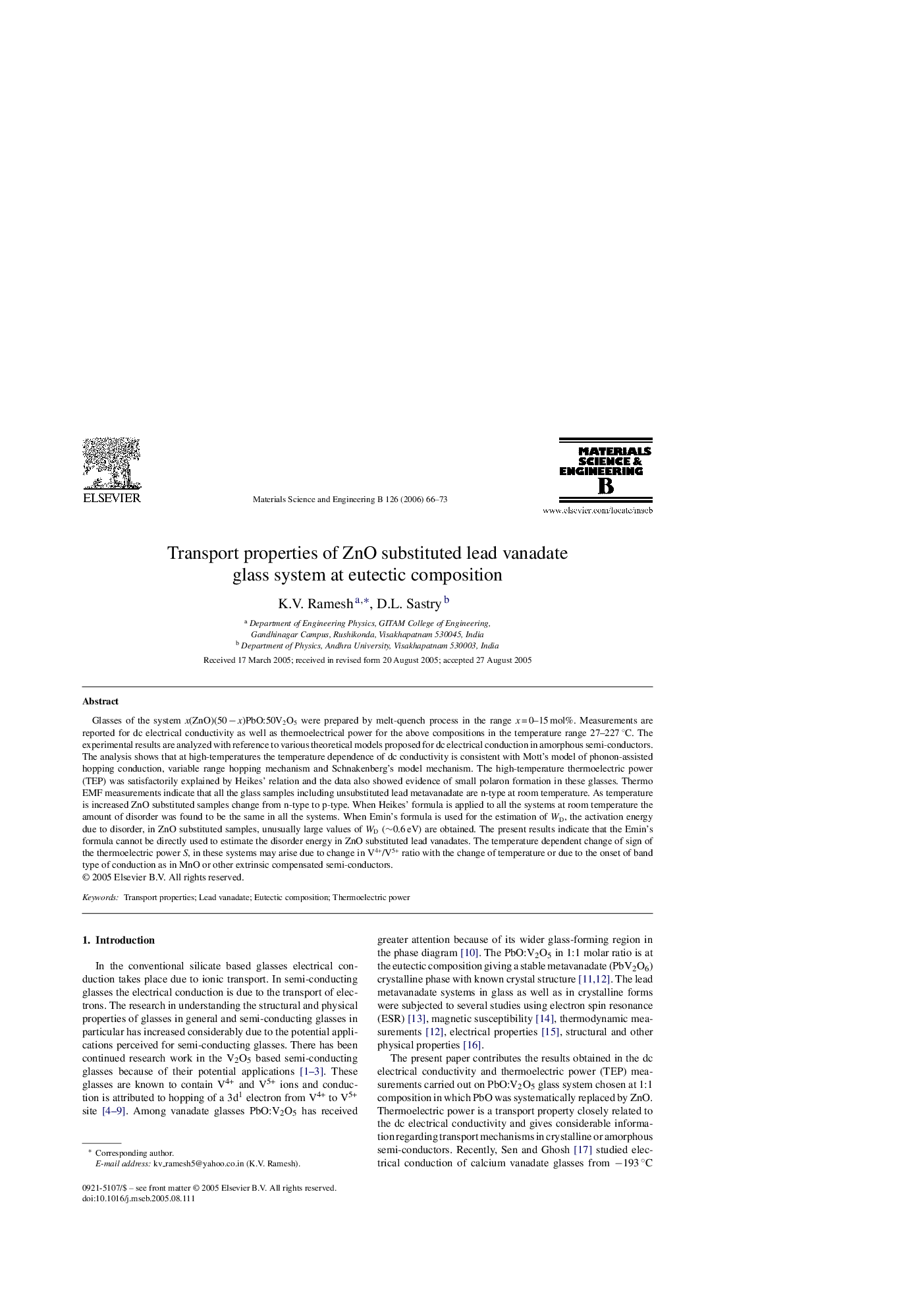| Article ID | Journal | Published Year | Pages | File Type |
|---|---|---|---|---|
| 1532156 | Materials Science and Engineering: B | 2006 | 8 Pages |
Glasses of the system x(ZnO)(50 − x)PbO:50V2O5 were prepared by melt-quench process in the range x = 0–15 mol%. Measurements are reported for dc electrical conductivity as well as thermoelectrical power for the above compositions in the temperature range 27–227 °C. The experimental results are analyzed with reference to various theoretical models proposed for dc electrical conduction in amorphous semi-conductors. The analysis shows that at high-temperatures the temperature dependence of dc conductivity is consistent with Mott's model of phonon-assisted hopping conduction, variable range hopping mechanism and Schnakenberg's model mechanism. The high-temperature thermoelectric power (TEP) was satisfactorily explained by Heikes’ relation and the data also showed evidence of small polaron formation in these glasses. Thermo EMF measurements indicate that all the glass samples including unsubstituted lead metavanadate are n-type at room temperature. As temperature is increased ZnO substituted samples change from n-type to p-type. When Heikes’ formula is applied to all the systems at room temperature the amount of disorder was found to be the same in all the systems. When Emin's formula is used for the estimation of WD, the activation energy due to disorder, in ZnO substituted samples, unusually large values of WD (∼0.6 eV) are obtained. The present results indicate that the Emin's formula cannot be directly used to estimate the disorder energy in ZnO substituted lead vanadates. The temperature dependent change of sign of the thermoelectric power S, in these systems may arise due to change in V4+/V5+ ratio with the change of temperature or due to the onset of band type of conduction as in MnO or other extrinsic compensated semi-conductors.
